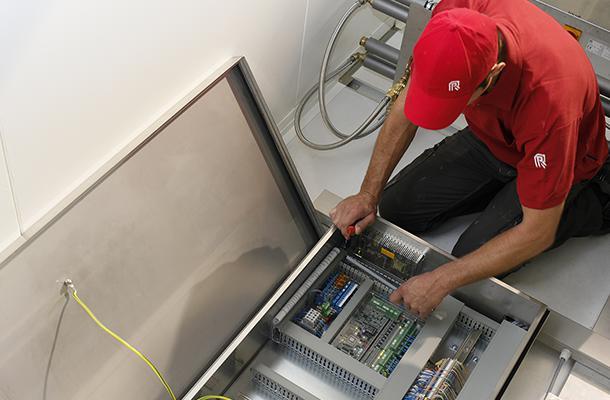Designing a hatchery’s electrical system
Tags: Hatchery management | Whitepaper
, 27 August 2010

Uninterrupted electrical energy is critical to optimising incubation and other hatchery processes.
Protecting supply
Should power from the grid be interrupted or fail, a back-up generator with Automatic Voltage Regulator and auto switch-over will protect normal hatchery operations.
Generators typically load up to 80% of their capacity for continuous operation. However if there is a risk of frequent power failures, a second standby generator is recommended. Keep generators close to the main power supply and fuel storage area.
Stability of supply is also important. Voltage should not exceed +/- 10% variation - and frequency not more than +/- 2% of nominal value.
Individual Uninterrupted Power Supply (UPS) is recommended - particularly for incubator controllers, ethernet switches, automation controls, computers, alarms and other key electrical functions - as this protects all the hatchery’s electronics in the event of a system-wide failure.
Finally in terms of protecting your supply, make sure your system is grounded. This not only protects users, but also ensures that electronics operate reliably.
Calculating system load
Total connected electric load is expressed as ‘Installed Value’. The hatchery may consume up to its total connected load, or Installed Value, either completely or in part during operation, but this load cannot be exceeded. Cables and fuses should be selected based on Installed Value.
Because electrical consumption varies, average consumption will be lower than the Installed Value. Incubators may, for example, use heating or cooling, but not both, depending on the age of the embryos. And not all motors in the hatchery- for example on hatchery automation - will run 24/7.
Total Electrical Load is calculated by adding all duty equipment (excluding standby-equipment) plus a contingency for spare or unforeseen load requirements. Depending on the accuracy of the electrical system’s design, this could in practice mean an aditional 10-20% spare capacity
Safety & compliance
Follow local electricity board regulations when choosing power distribution panels, design and cable type/sizes. Note that Variable Frequency Drives require shielded cables to avoid interference with signalling cables. Using separate power and signal cable trays will also help to avoid interference.
Electronic equipment is sensitive. Take care to protect against lightning strikes and surges and if possible, provide surge arresters in distribution panels, to protect equipment from voltage spikes.
Try to balance the load to all phases, for example by connecting respective incubators 123, 312, 231 etc.
The presence of water in hatcheries, eg. for washing, circulation and from condensation, requires electrical installations to be water resistant (IP66). Using “clean” cable design above false ceilings can help, by creating fewer places for dirt to collect and by keeping electrical cabling away from sources of water.
It is important that electrical installations comply with local regulations and are carried out by suitably qualified, certified personnel. Incorrect installation increases the risk of injury to staff and can create a significant fire hazard.
Advice
- Ensure that a certified electrical supplier checks and approves your system during installation and carries out regular testing.
- Incorporate “clean” design where possible, eg. running cables above false ceilings.
- Check the power supply backup system regularly: make sure it will work if needed.
- Provide automatically fused control boxes for each item of equipment in the power distribution panel to prevent interruption in case of tripping.
- Select hatchery equipment with energy-saving features wherever possible, including intelligent frequency drives for incubators and effective climate control systems, to significantly reduce energy consumption and lower the total cost of constructing the hatchery’s electrical systems.
- Ensure that your system has sufficient capacity for future expansion.